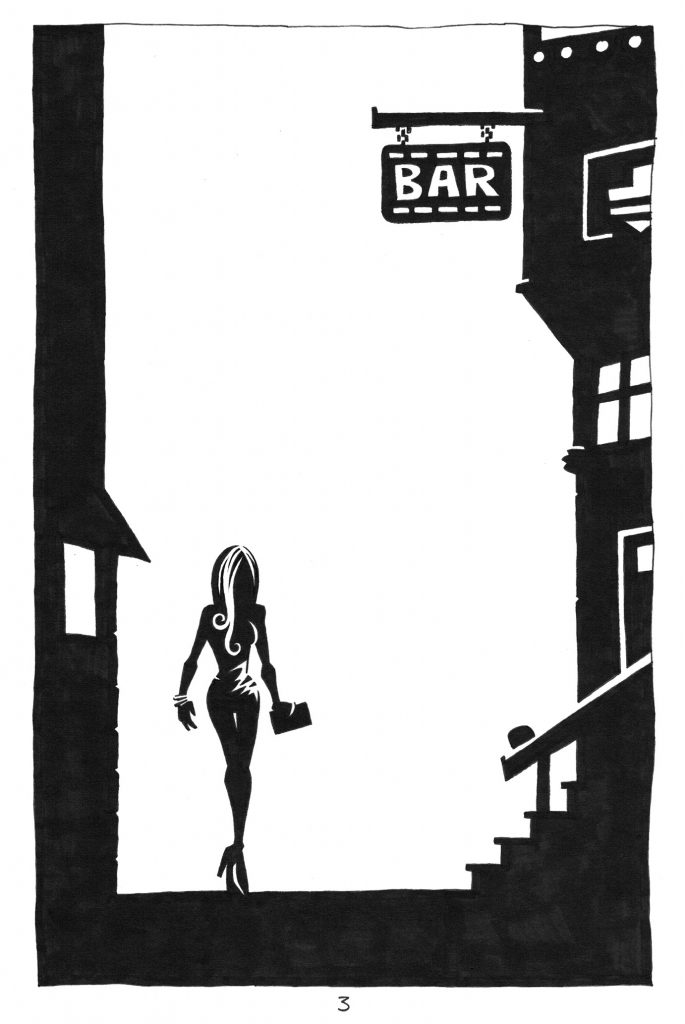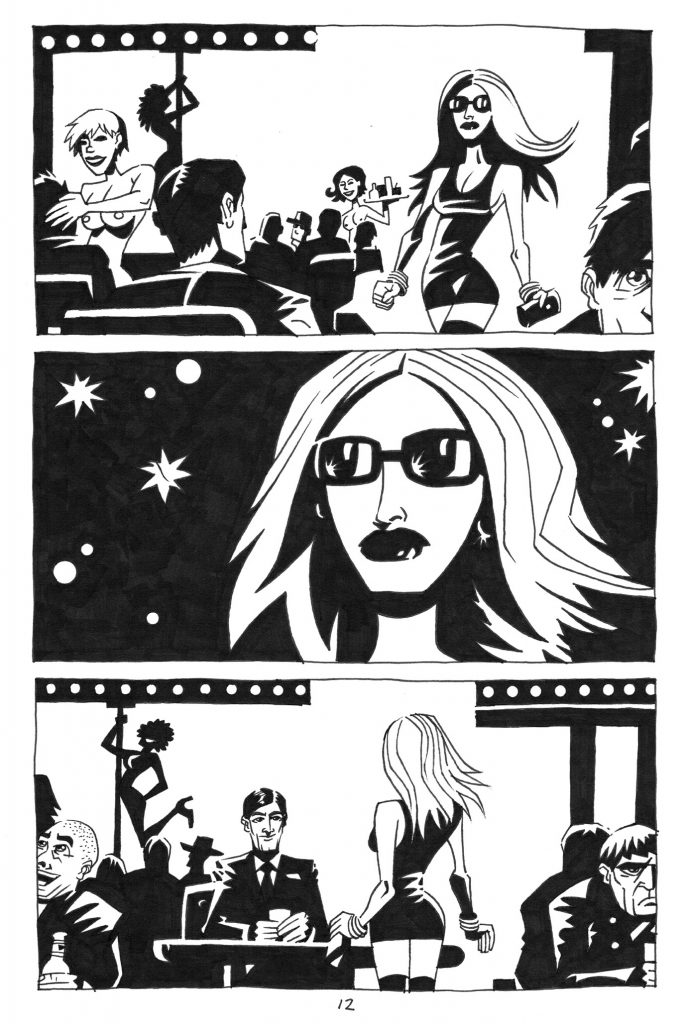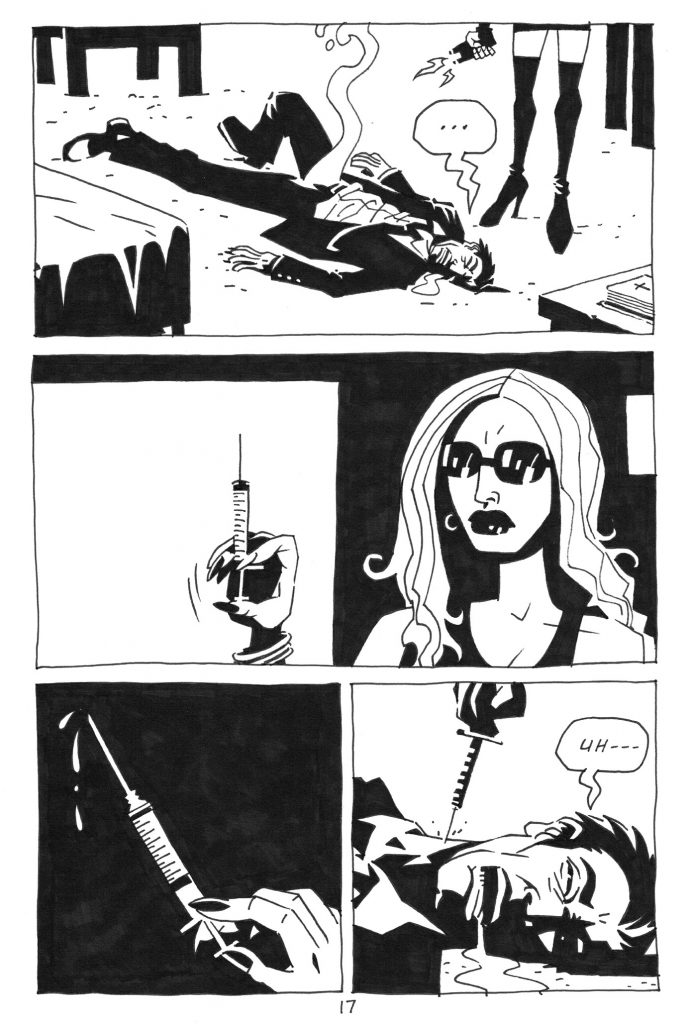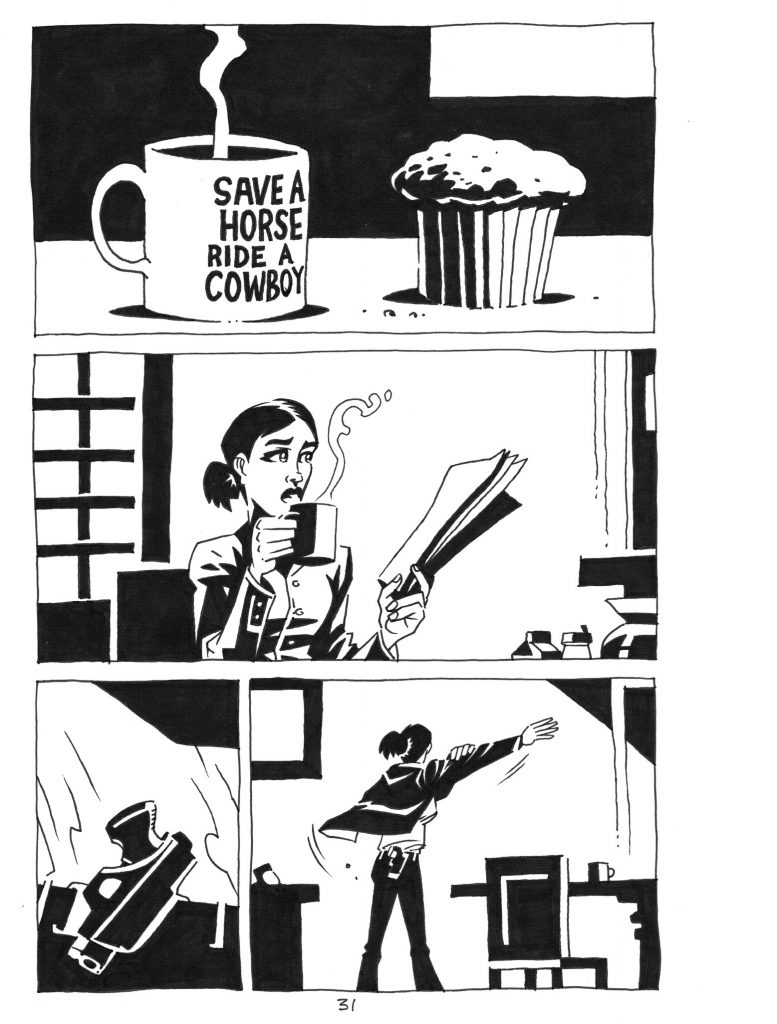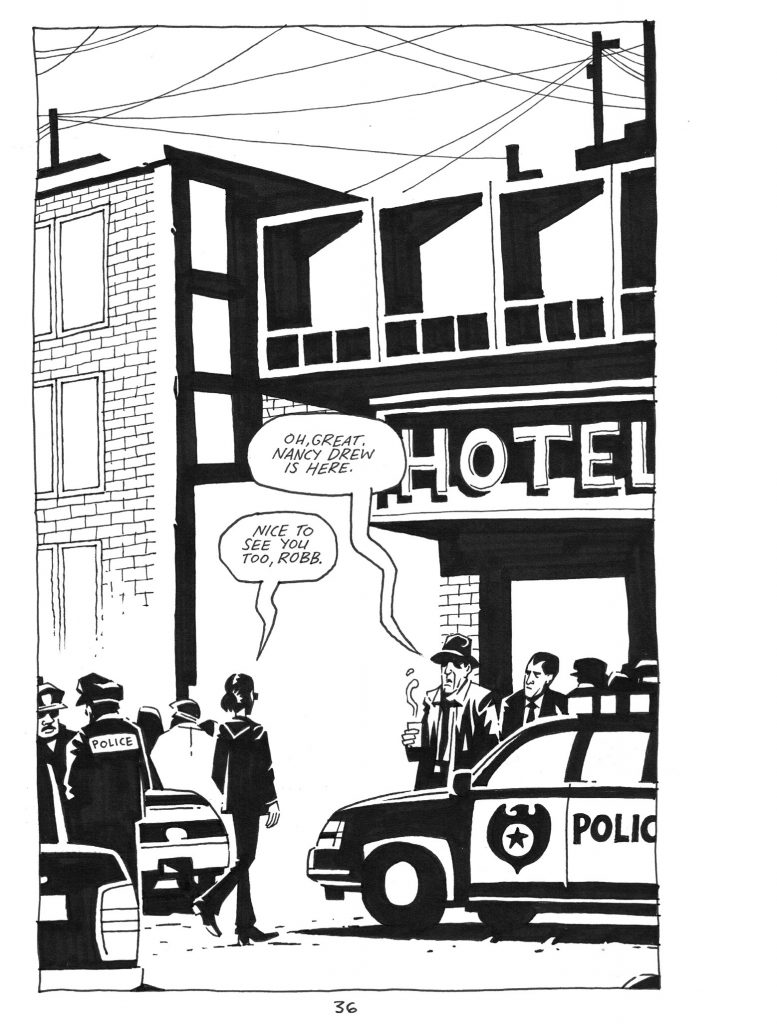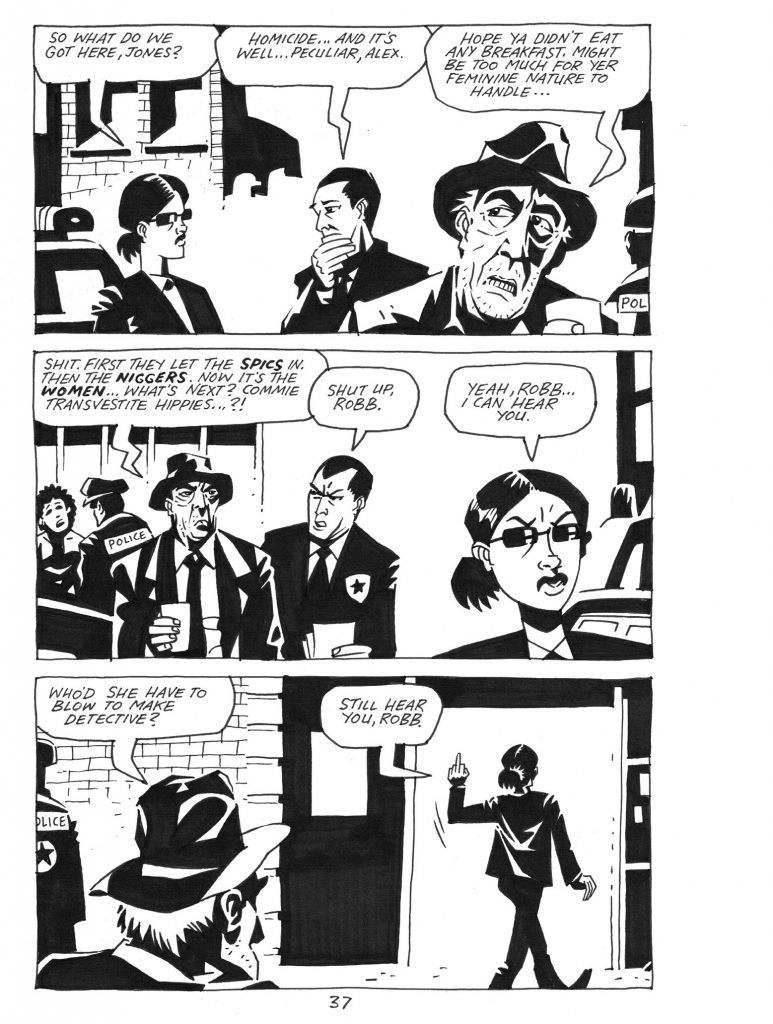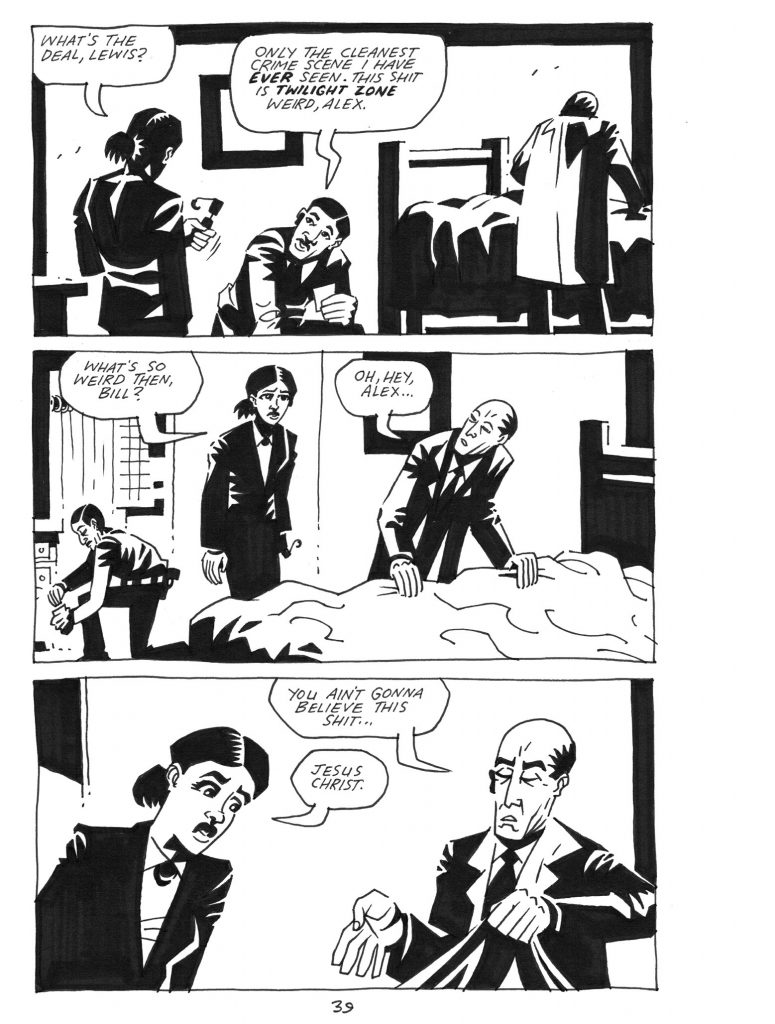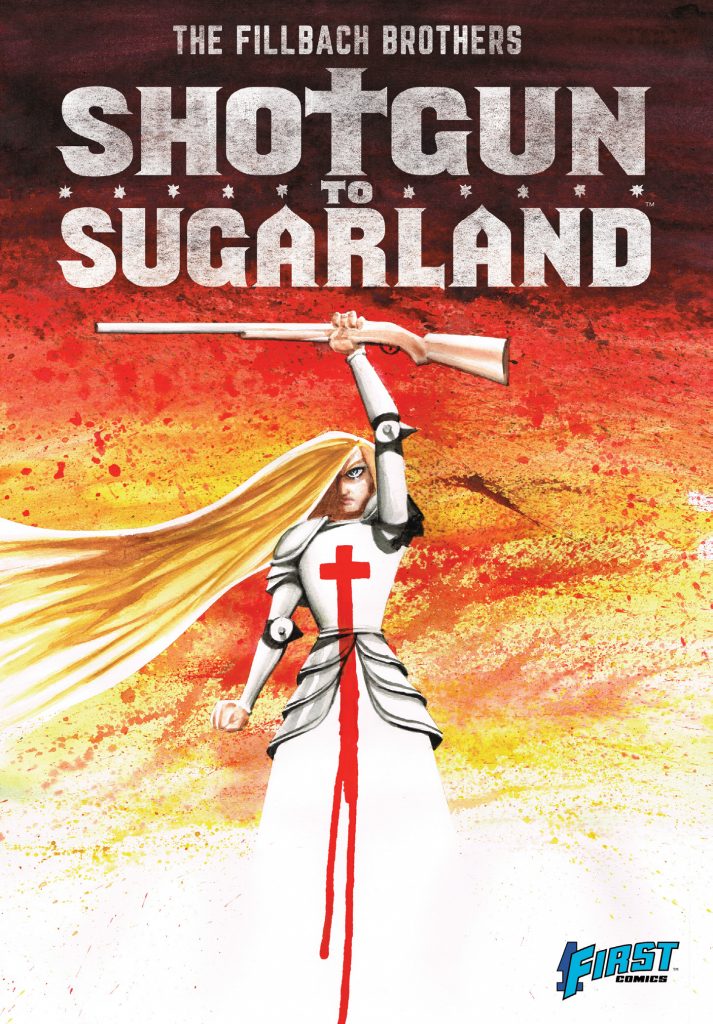
- Shotgun to Sugarland
- Written & Illustrated by The Fillbach Brothers
- Devil’s Due Comics
Detective Alexandra Stride is hunting a fanatical woman on a bloody trail of vengeance fueled by manic religious fervor. As the hunt comes to an end, one may lose her sanity and one may lose her life. But, in the end, both will find their savior. A new mind-bending experience from The Fillbach Brothers.
Shotgun to Sugarland focuses on two very different women…
Homicide Detective Alex Stride is after a killer. That killer is on a holy crusade, operating under the belief that she enforces God’s will. One lives her life by the adage “to serve and protect” and the other by the creed “the wages of sin is death”. Both carry the strength of their convictions, and the only real certainty is that their meeting will come to a definitive end.
Just reading that paragraph, a person could get the idea that Shotgun to Sugarland is just another story about murder and the pursuit of those who would perpetrate it. Okay, sure… it is a story about murder, but that’s going to be just about the end of the well-established (ie: over-used) plot devices you’ll find here. Yes, Alex Stride is a “tough as nails” cop dedicated to her job, believing that the protection of the innocent is all-inclusive. Yes, the killer is delusional, believing that her mission is one of just retribution and is willing to pay any cost to see it through. Taken at face value, it would be easy to assume that we’ve already seen this, that we already know how it’s all going to come together.
We would also be wrong.
The Fillbach Brothers (Star Wars: Clone Wars Adventures, Maxwell Strangewell, Cadaver Dogs of Winter, Illuminati Transport, and Dog Soldiers) have put together a story that defies the pigeonholing of its characters. Alex is married, but not to her job or a backlog of scumbags who need to be put away. Nor is she married to a two dimensional stereotype who either shares in her career path (but is maybe a little bit jealous of her success & opportunities) or feels threatened by it. Alex’s husband, “Slim”, is a horse rancher who looks like he stepped right out of a Louis L’amour novel. Together, the two support each other, never too busy or wrapped up in their work to lend a hand or an ear, whichever is needed. Everyone in this book, from the gruff senior detective who’s “getting’ too old for this shit” to the rookie beat cop eager to make a name for himself (“dammit, Billy, not on my watch! Not. On. My. Watch!”), could very easily be wrapped in stereotype and served up in a tidy bundle for easy consumption. Thankfully, “quick and easy” isn’t something the Brothers Fillbach seem to be interested in.
That concept is upheld by the subtle presence of subtext evident in the story’s quiet moments. In any story, trusting your readers to follow the unspoken clues, using visual hints and signs to fill in some of the blanks, takes a leap of faith. Use of the concept “show, don’t tell” doesn’t always come naturally to writers, who may have a firm grasp on their ideas and are so determined to get them onto the page that they’re willing to beat their readers over the head with exposition and internal monologues. The Fillbachs are able to settle down and let their pictures tell large parts of the story without the use of any dialogue at all. By allowing the drawings to take on some of the heavy lifting, a reader is able to draw some conclusions of their own rather than be spoon fed each and every plot point and character beat.
Much of that ability comes down to a writer having faith in the artist in a comic or graphic novel. When the writing and illustration credit is shared equally between a pair of siblings, maybe that kind of faith makes a little more sense (or, if anyone out there has a brother or sister, maybe it doesn’t…). The Fillbachs use a pretty straightforward black and white style that relies heavily on sharp contrasts… not much by way of gray area here. It might seem overly simplistic at first glance, but once you’re sucked into the book and fully invested, it doesn’t take too long to realize that the style works perfectly. The minimalist approach lets a reader focus on the essentials in any given panel, with no visual clutter to get in the way. When the Fillbachs do use color in a softer style, relegated to flashbacks and dream sequences, it brings a little more impact… you know that you’re being given a look at something important in the story, so you’re really paying attention to what’s going on.
Very different from their previous outing, Dog Soldiers (my full review can be found here), Shotgun to Sugarland is a dark, gritty, emotionally layered crime story that makes no promises and pulls no punches. In my eyes, that cements the Fillbach Brothers as creators who are always looking for something a little different and aren’t afraid to tell a story in their own way. I look forward to their next outing, and can’t wait to add this one to my bookshelf.

